Please add image or text logo
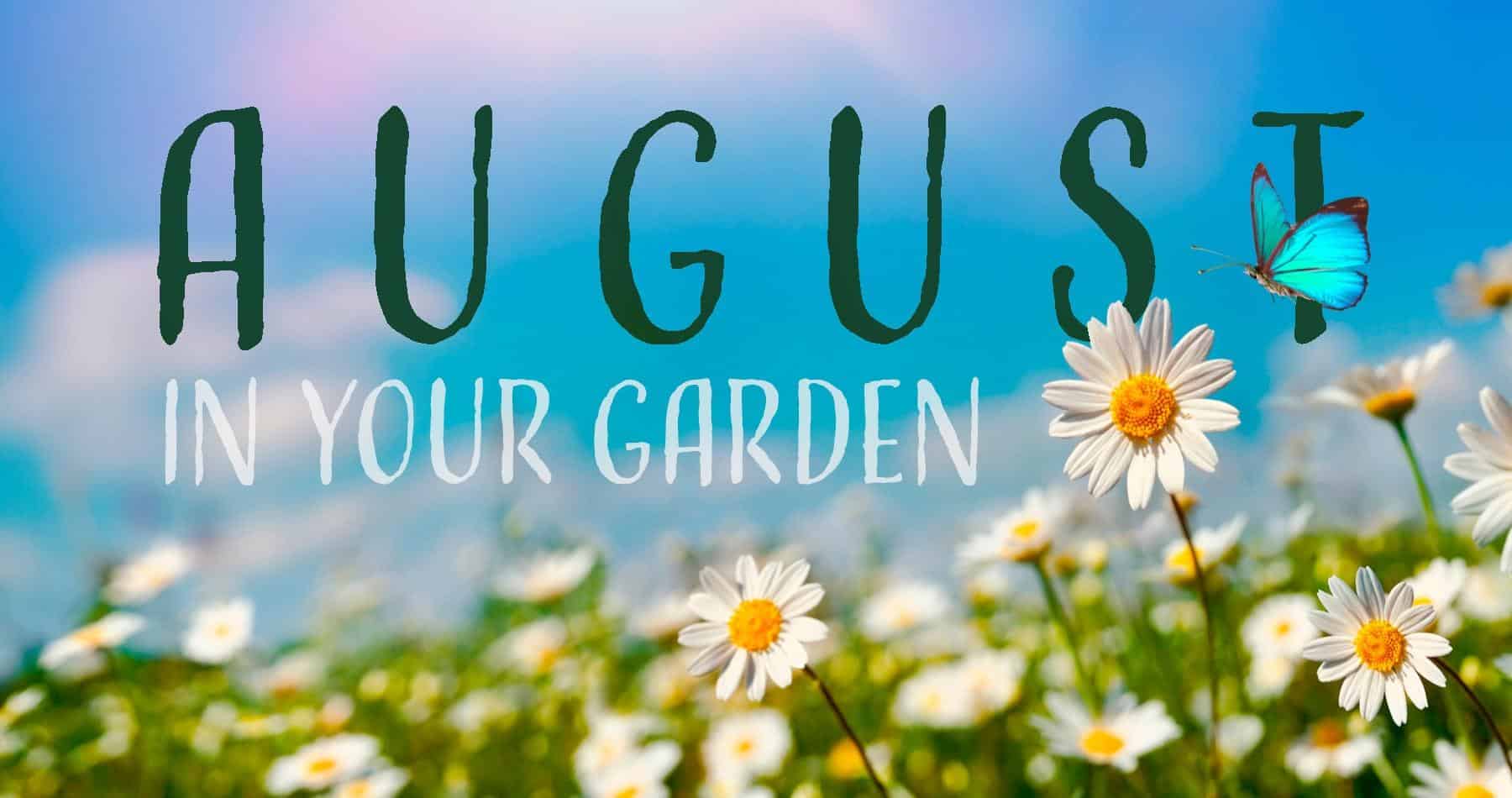
Here is our round-up of news, top tips and ideas to make the most of your garden!
This month, gardens and vegetable plots are at their best – flowers continue to produce vibrant displays and there’s still time to sow fast-growing salad crops. Keep reading to discover our top tips for August…
Late-summer lawns can sometimes look a little parched from the hot weather, but will recover by themselves once the rain comes, so the focus in August is on taking care of the plants in your borders and maximising the yield from your vegetable patch!
• Prune summer-flowering shrubs. Many summer-flowering plants will finish blooming in August, so this month is an ideal time to prune them. Roses will especially benefit from pruning between now and early winter – reduce the plant’s size by about a third to prevent wind rock.
• Regularly turn compost. Over the coming months, more compostable material will become available in your garden. In order to encourage speedier decomposition, stir the contents of your compost bin about once a month.
• Cut back faded perennials. It is not too late to cut back hardy perennials, such as Cat Mint and Lady’s Mantle. They may re-flower, depending on the weather, but they will otherwise produce new foliage, which will keep your garden looking healthy.
• Sow hardy annuals. If you’ve been planning the flowers and colours you’d like to see in your garden next year, the end of August is the time to begin planting hardy annuals, such as pot marigold, opium poppy and quaking grass.
• Deadhead regularly. Continue to deadhead plants that are past their best to encourage them to produce flowers throughout autumn. Dahlias benefit greatly from this – you can even cut their stems to plant indoors for beautiful displays.
• Protect delicate plants from the sun. Even opening vents in a greenhouse can sometimes not be enough to protect plants from the sun when it’s at its hottest. Those with delicate leaves or abundant growth, such as leafy herbs, are often most at risk of damage. Put these plants in complete shade if the weather is due to be hot, but avoid starving them of light for too long.
• Look out for pests. At their peak during the summer months, Asparagus beetles lay tiny dark eggs on asparagus foliage. This larvae will feed on the asparagus, damaging current crops and impacting how well they will perform next year. If you find any of these pests, or their larvae, remove them from the plant and throw them into a bucket of soapy water.
• Intercrop. Fast-growing crops, such as kohlrabi, are perfect for growing in the spaces between slower-growing veg, as they can be harvested before the slower ones need the space to grow.
Visit any of our centres to pick up essential gardening tools!
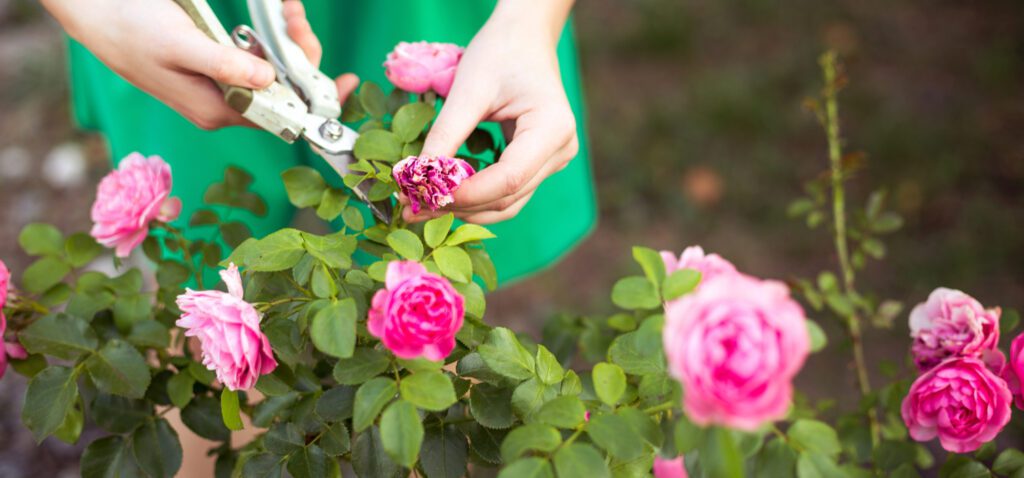
• Florence fennel. Sow the seeds 2.5cm deep and 30cm apart. To prevent this plant from bolting, keep the soil moist. Adding a thick layer of mulch will help the soil to maintain its moisture.
• Kohlrabi. Sow kohlrabi 1.5cm deep and 23cm apart. Avoid the crop becoming wood-like, by harvesting when the swollen stem is no larger than a tennis ball.
• Pak choi. These leafy greens should be sown 2cm deep and 30cm apart. Water regularly to ensure the soil stays moist, as this encourages plentiful leaf growth.
• Spinach. Sow 2cm deep and 15cm apart. Use fine-mesh netting to protect the leaves against damage from pests and birds.
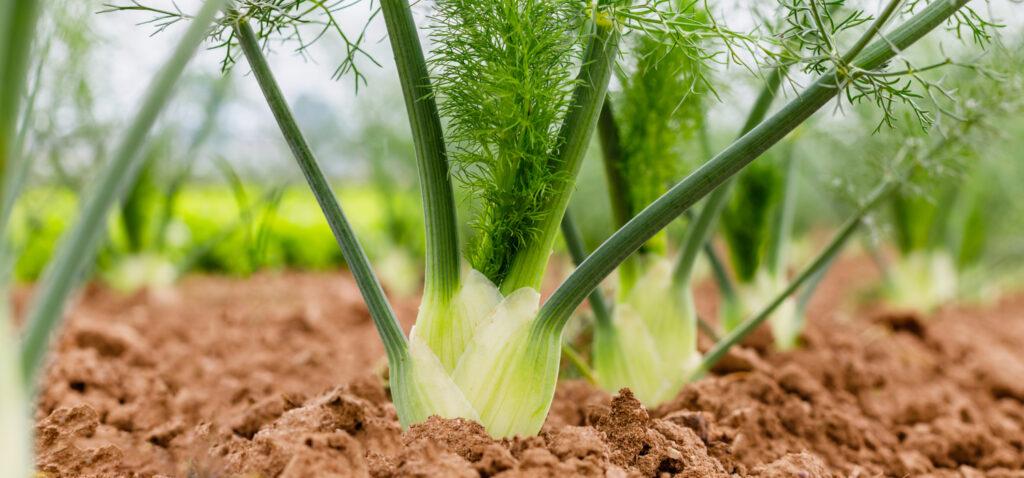
• Cauliflower. Cauliflowers sown in spring should be ready to harvest. Cut the main head when it is around 6-8 inches in diameter, but keep the plant in the ground, as it will continue to produce smaller florets.
• Cucumbers. Check cucumber plants regularly, as the fruits can grow rapidly. It is best to harvest cucumbers when they are young, as older plants can become bitter.
• Runner beans. Harvest runner beans when they are young and tender, around 15-20cm long. Harvest every few days to keep them producing – if a pod reaches maturity, it will stop flowering completely.
• Broccoli. It is best to harvest broccoli in the morning when the florets are firm, just before they flower. If there are any yellow petals, harvest immediately as the quality of the plant will begin to decrease rapidly.
• Blackcurrants. Some varieties of blackcurrants will continue to produce fruit well into August, however early harvests can be frozen to enjoy later in the year.
• Blueberries. Once a berry changes from green to a dusky blue, it is ready to pick. The berries won’t all ripen at once, so it is best to check them regularly and harvest as required.
• Raspberries. Raspberries can continue ripening until the first frosts, but the fruits are ready to pick when they are rich in colour, plump and easy to pull off the plant.
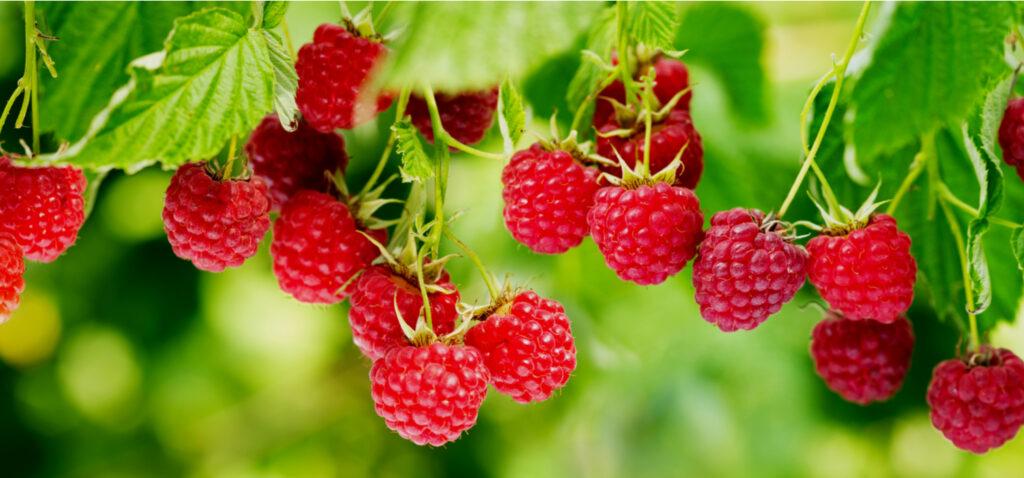
Embrace what’s left of summer by creating beautiful, vivid displays with these flowers that love being in full sun!
• Sunflowers. This one may seem obvious but there are far more varieties than you may think. With different colours and heights, you can find a sunflower that fits in perfectly with your other plants. Why not try a copper-coloured ‘Velvet Queen’, a perfect-for-pots ‘Little Leo’, or a green-eyed ‘Superted’ sunflower?
• Salvias. The unmissable fragrance produced by Savlias makes them a wonderful addition to any garden, especially if they can be positioned close to an open door into your home! Try Salvia michrophylla ‘Bordeaux’ or Salvia ‘Nachtvlinder’ for wonderful summery smells.
• Achillea ‘Moonshine’. The dense yellow flowers of this plant provide an intricate and beautiful centrepiece for any display.
• Erodium variabile ‘Bishop’s Form’. This low-growing plant produces vibrant pink flowers, surrounded by dark green leaves. Add to an outdoor pot for a wonderful pop of colour!
Making your garden a haven for wildlife doesn’t have to be complex or expensive.
Here are some of the simpler ways to create homely habitats for a variety of species…
• Plant grasses. Long grasses encourage the creation of communities of plants, offering shelter to insects, small mammals and birds. Pennisetum orientale, Calamagrostis ‘Karl Foerster’, Cortaderia richardii, and Milinia ‘Transparent’ are all lovely options to add dimension to your garden and support your local wildlife.
• Create a log pile. This simple project provides refuge for insects, amphibians such as frogs and toads, and small mammals such as mice. Simply gather any logs and twigs that you find and stack them in a quiet area of your garden.
• Keep your compost active. Both contained and open compost heaps provide homes and foods for a variety of animal species. Compost bins offer shelter to bumblebees, slow worms, and even mice and voles, while open heaps allow birds to search for insects.
• Plant for pollinators. Butterfly and moth species are in decline, but what you choose to plant can help them thrive. For effective pollination, plants with tubular flowers containing lots of nectar, such as Buddleia, are ideal, as well as those with flat ‘landing platforms’, such as Verbena bonariensis and Hylotelephium spectabile. Night-flying moths will pollinate plants that open in the evening, such as honeysuckle (Lonicera) and night-scented stocks (Matthiola). Visit us in-store to pick up a variety of plant and flower seeds.
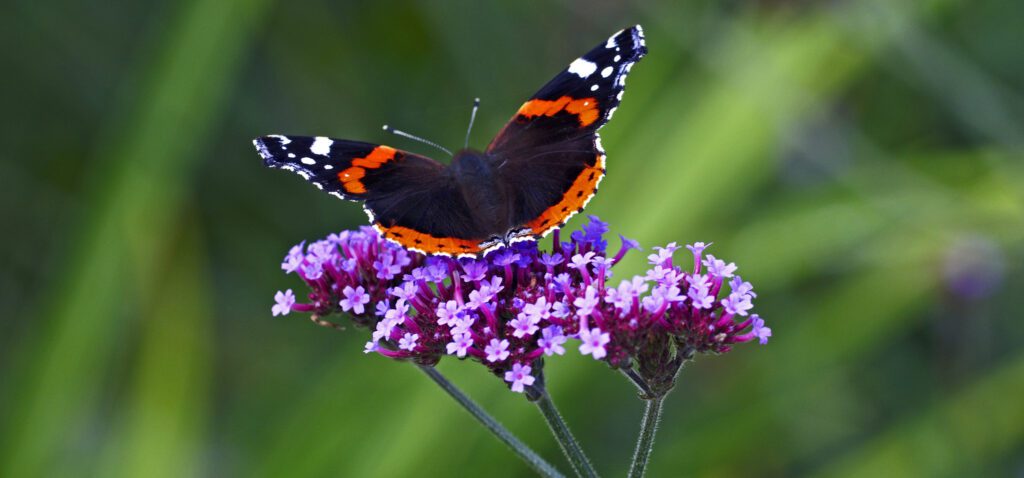
Here are some chemical-free ways to remove and prevent weeds!
• Leafmould. This naturally occurring product can be left as it is on soil or can be collected in autumn, left to rot and then then applied. It is best used as soil enrichment for woodland and shaded gardens.
• Gravel. Best used on informal pathways and driveways, apply a 2.5cm-thick covering of gravel over a layer of scalpings, if possible, to suppress weeds. Hoe any weeds that do make their way through the gravel.
• Weed-suppressing membrane. Ideal for use among shrubs that don’t need to be accessed regularly, this mesh is fine enough to prevent weeds growing but still allow rain through. The membrane can be hidden with a layer of mulch.
• Newspapers. Lay a substantial amount of newspaper over weed growth and weight it down in order to smother it. The paper will eventually rot and become organic matter, but can be layered with wood chippings for a more tolerable appearance!
• Chipped bark. This is a very natural-looking and long-lasting option for weed suppression. Cover the area in a 3cm-thick layer.
• Hoeing. Hoe over bare areas of soil every week to sever the tops of the weeds from their roots. This also creates a drier surface that helps to prevent further germination.
• Groundcover planting. Low-growing plants provide a dense mass of growth, perfect for suppressing weeds. This solution is ideal for the front of borders or under trees and shrubbery.
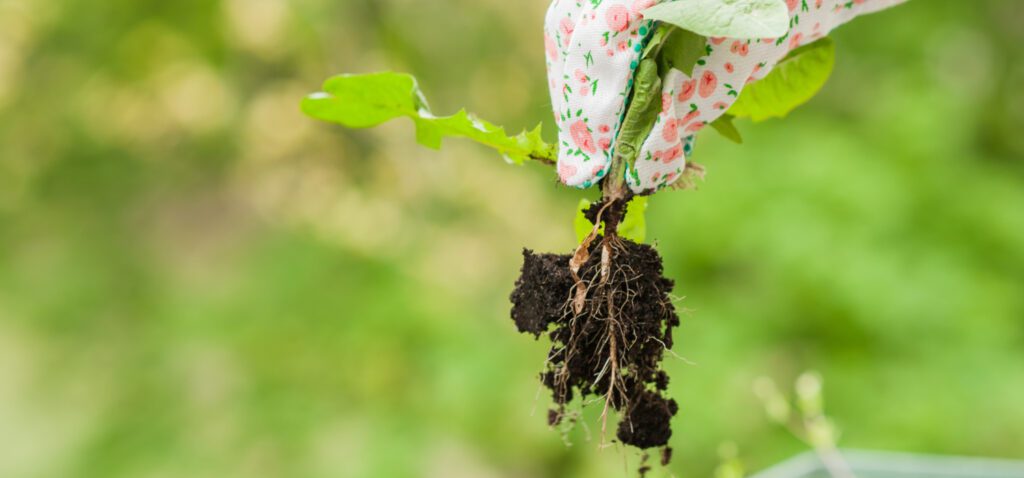
Believed to be extinct in the UK, a rare species of orchid, Serapias parviflora, has been found on the rooftop of Nomura bank in London. Known as the small-flowered tongue orchid, this is only the second time the species has been found in the UK!
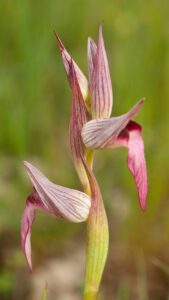
Two fields, one a barley field and the other grassland, have been rejuvenated through “passive rewilding”.
Abandoned in 1996, the grassland has grown into a young wood with 132 live trees per hectare, 57% of which are oaks. The barley field, which was abandoned in 1961, now has 390 trees per hectare, 52% of which are oaks.
Jays have been heralded as the source of the new oak trees, as they tend to carry acorns much further than mice and squirrels.
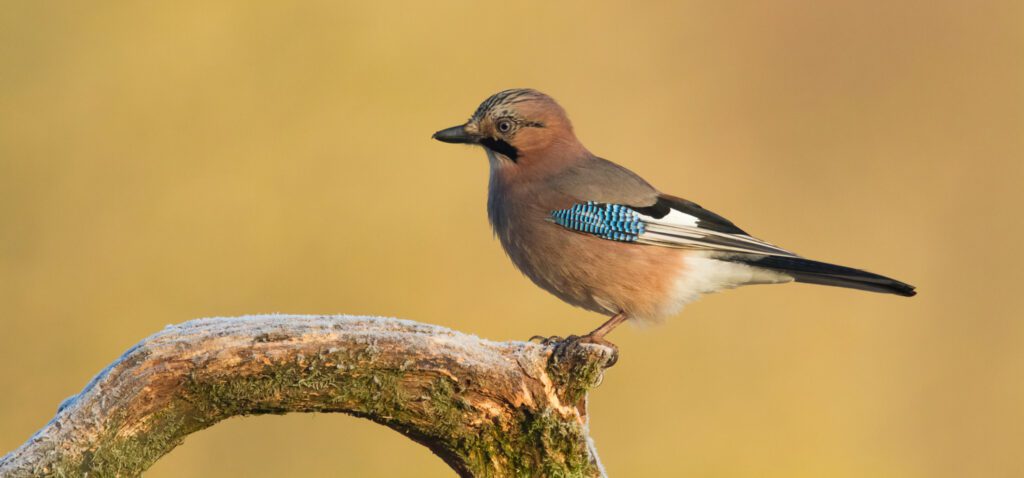
Written to appeal to new gardeners, people with minimal space, and those looking to take on the challenge of growing their own food, this book covers all of the essential information needed to grow vegetables in pots, window boxes and even hanging baskets!
This gardening veteran shares her knowledge on everything from edible plants to ornamentals. Taking clues from how plants grow in the wild, Carol shares top tips on helping plants thrive in any space and environment.
Click here to find out more and watch the show!
“August is the border between summer and autumn; it is the most beautiful month I know.”
― Tove Jansson, Finnish author
Stay safe,
From all the team at Earnshaws.